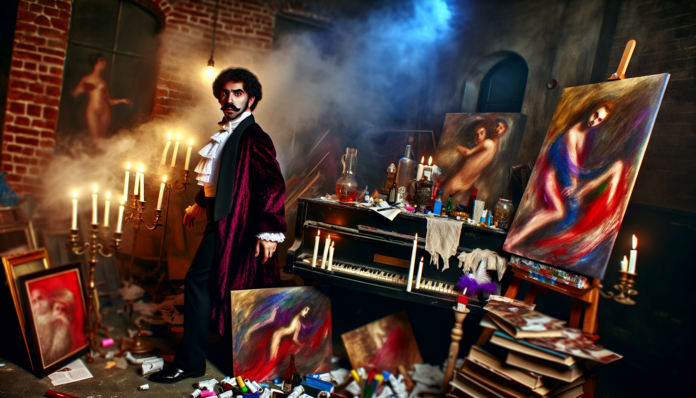Introduction
Gustav Klimt, an Austrian symbolist painter, is perhaps best known today for his iconic works that celebrate eroticism, femininity, and sensuality. Living during the late 19th and early 20th centuries, Klimt became embroiled in scandal, largely due to his numerous secret love affairs with his female subjects. These relationships not only sparked gossip in Vienna’s art circles but also greatly influenced his artistic style and thematic choices.
Against a backdrop of strict Victorian-like morals, such affairs were both taboo and tantalizingly seductive. While contemporary audiences appreciate Klimt’s art for its beauty, the societal norms of his time cast a different shadow on his actions, raising questions about morality, gender, and power dynamics.
The Scandal
Though Klimt’s personal life was shrouded in secrecy, stories of his love affairs emerged, particularly with models like Emilie Flöge, who many believe was his muse and lifelong companion. The scandal primarily revolved around Klimt’s open relationships with these women, many of whom were likely his students or friends, leading to whispers of impropriety.
Key Events:
- Forbidden Love: Klimt often worked in a private studio, where he would invite models for long, intimate portrait sessions, which fueled speculation about the nature of these encounters.
- Intimate Portraits: His artworks, such as “The Kiss” and “The Beethoven Frieze,” reflect not only uncanny sexual tension but also a spirit of romantic longing, reinforcing assumptions about his personal relationships.
- Public Outrage: Critics in Vienna were quick to judge, deeming Klimt’s portrayal of women—often adorned in provocative poses—a violation of societal norms. A notable quote from the time captured this sentiment: “Klimt paints the flesh, not the soul.”
Despite the backlash, Klimt continued to push boundaries through his art, sparking both admiration and outrage within the artistic community.
Moral and Cultural Analysis
The reaction to Klimt’s affairs was emblematic of the rigid societal structures of early 20th century Europe. Many viewed his depictions of women as a form of exploitation, leading to debates about the morality of the artist. Critics labeled him as a libertine, while supporters touted his unapologetic celebration of female sexuality.
Societal Reaction:
- Public Criticism: Moral guardians decried Klimt as a purveyor of sordid fantasies, suggesting his influence would lead to the moral decay of society.
- Artistic Defense: Conversely, some hailed him as a pioneer for his bold depiction of sexuality and emotional depth, viewing his work as a reflection of modern life.
Consequences:
- Polarizing Legacy: Klimt’s work faced censorship, though it undeniably garnered a loyal following. Accusations ultimately led to some exhibitions being banned due to their risqué nature.
- Modern Perspectives: If Klimt’s scandal occurred today, while some might still point fingers regarding power imbalances and ethical concerns, many would likely celebrate his contributions to art’s exploration of sexuality and intimacy.
Today’s audiences—encouraged by movements emphasizing body positivity and personal agency—might view Klimt’s relationships not only as personal indiscretions but as part of a complex dialogue about artistry and the human condition. In a society less restrained by Victorian ideals, Klimt’s passionate pursuits may even be praised for breaking boundaries.
In reflecting on Klimt’s lived experiences, we find a compelling narrative that underscores the nexus of love, artistry, and societal mores, making his story as captivating as the golden hues of his most famous works.

